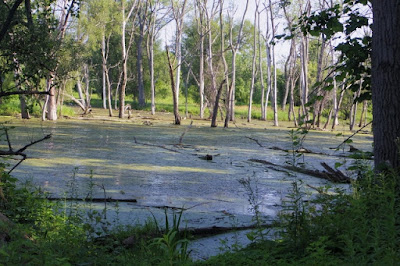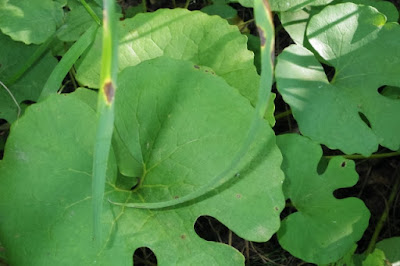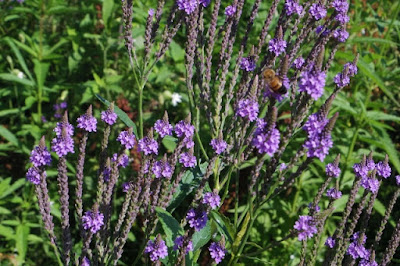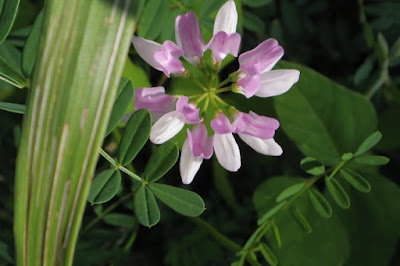The last site that Diane, Suzanne, and I visited was Seneca Bluffs, located on the Buffalo River. Like the other projects, this is a work in progress. This site, in the City of Buffalo, is owned by Erie County, which purchased it through a New York State Parks grant.
Andrea described it as a “natural park in a highly urban setting.”
The site is in the early stages of restoration. The goal is to eradicate Japanese knotweed and phragmite. The knotweed is eradicated with the use of herbicides, which are “spot sprayed.” The goal is to eliminate only the invasive plants. It is necessary to avoid “overspraying” or “drift,” which could injure desirable plants. Only trained, certified people can apply chemicals, either by spraying or by injection into the plants to be removed.
To keep the Japanese knotweed from coming back, the ground can be covered with a thick biotech fabric. This fabric cannot be removed. |































Thanks for the tour! I find it fascinating how these pockets of projects make such an impact on our environment and how important they are to have in place. Showcasing them like this is great for everyone to find out more about them.
The photos in this post are amazing. I thank you for sharing your journey. I think these kinds of projects are amazing and have a lasting effect on our world. I think more places should promote tours like this. I wish more former industrial sites would return to nature. Thank you for sharing.
Thank you very much, Kim and Susan.I am thrilled to see lush, colorful life come back to formerly industrial sites.